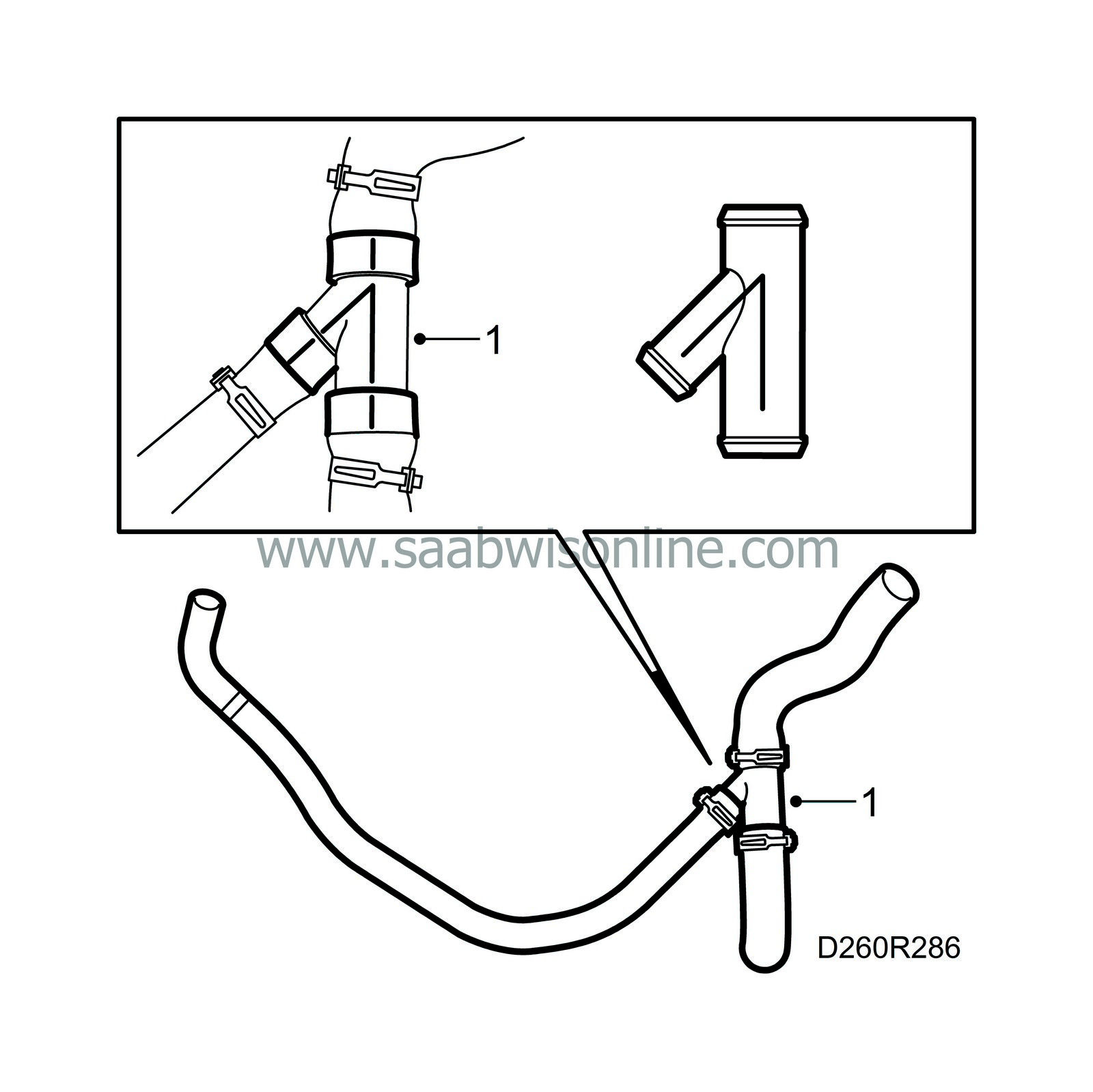Changing Y-connection on coolant hose
| Changing Y-connection on coolant hose |
| To remove |
| 1. |
Place the car on a lift. Open the bonnet and lay out wing protectors.
|
|
| 2. |
Open the expansion tank pressure cap and release any overpressure.
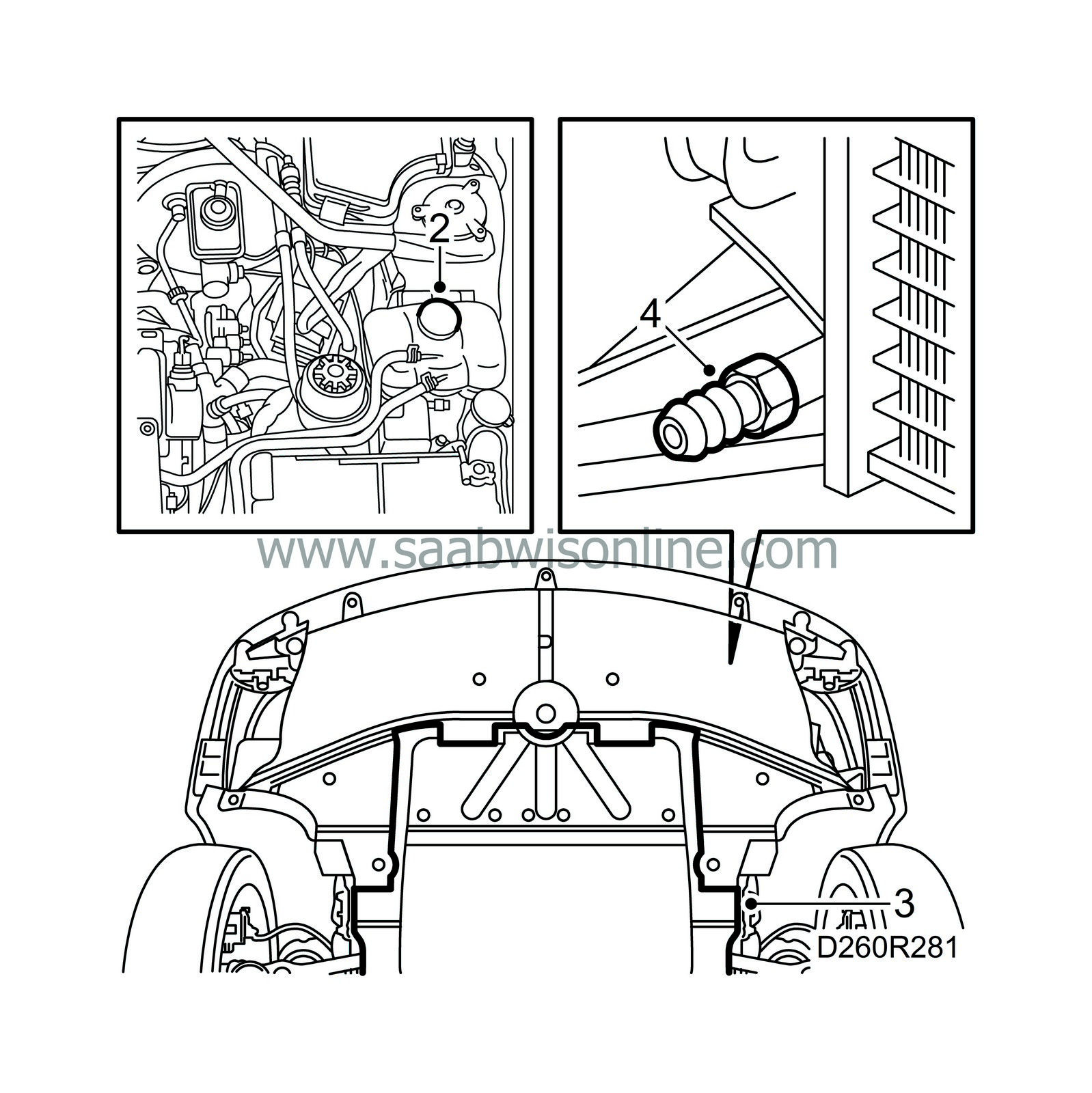
|
|
| 3. |
Raise the car and remove the bottom engine cover.
|
|
| 4. |
Position a container below the radiator and drain the coolant.
|
|
| 5. |
Undo the cable tie on the fan cowling and detach the coolant hose from the left engine mounting.

|
|
| 6. |
Close the radiator drain cock
|
|
| 7. |
Lower the car.
|
|
| 8. |
Remove the top engine cover.

|
|
| 9. |
Detach the upper coolant hose from the radiator and bend it out of the way.
|
|
| 10. |
Remove the turbo pressure hose.
|
|
| 11. |
Undo the coolant hose connections on the lower radiator connection, the thermostat housing and the joint to the heat exchanger. Remove the hose.
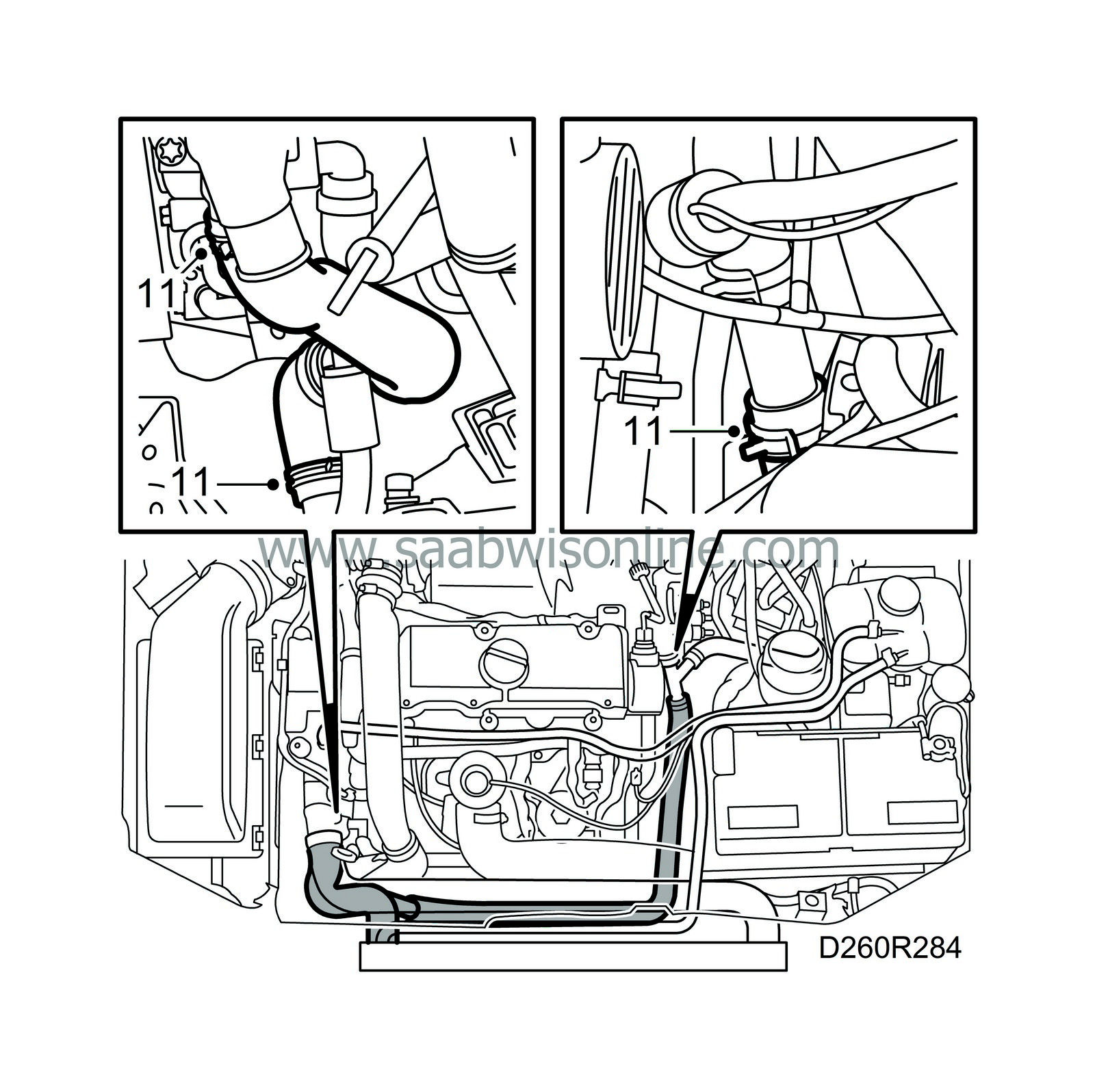
|
|
| 12. |
Lay the hose on a flat surface, undo the hose clips and move them.
|
|
| 13. |
Mark the hoses and Y-connection with paint or adhesive tape as illustrated. Remove the Y-connection.
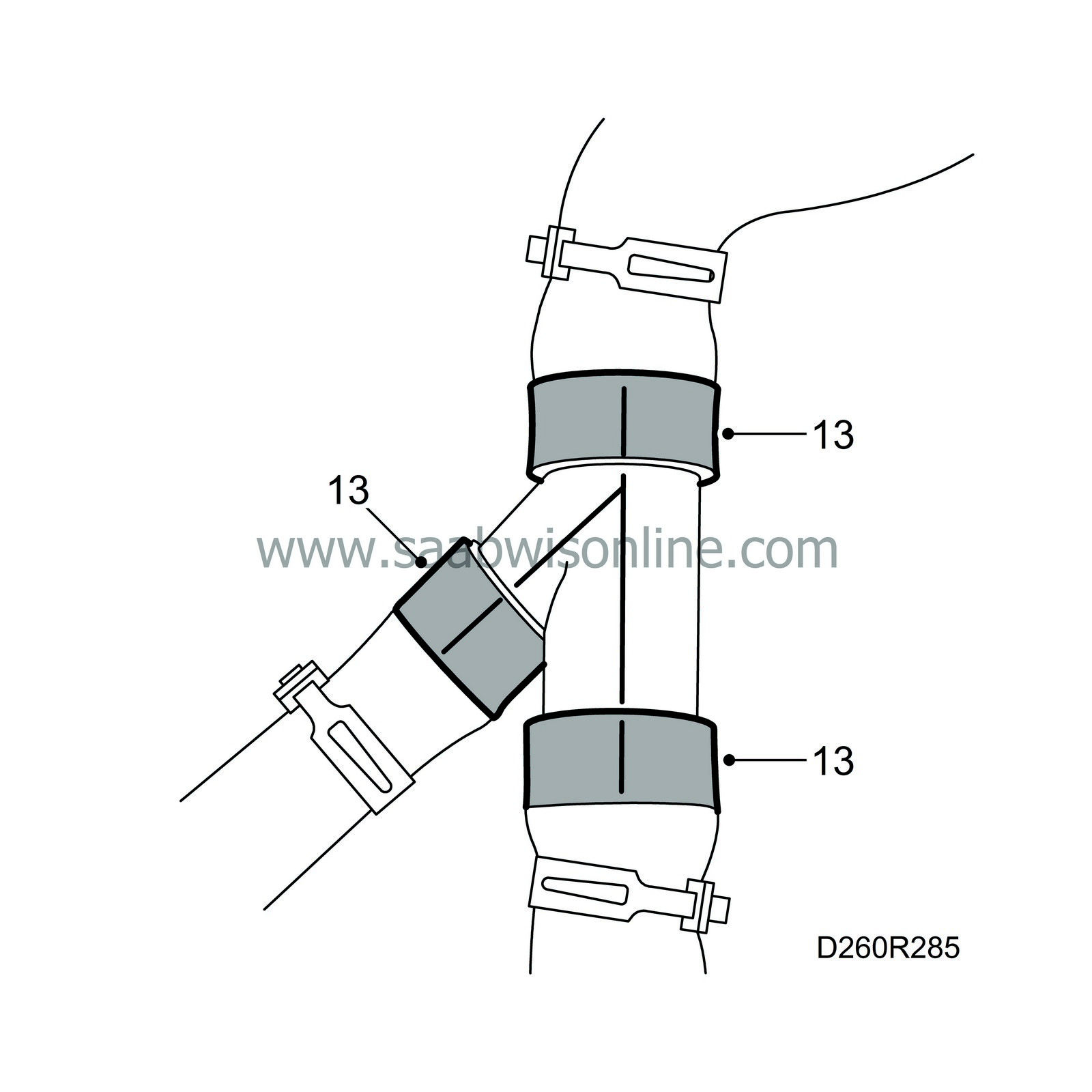
|
|
| To fit |
| 2. |
Fit the hose in the car.

|
|
| 3. |
Fit the turbo pressure hose.
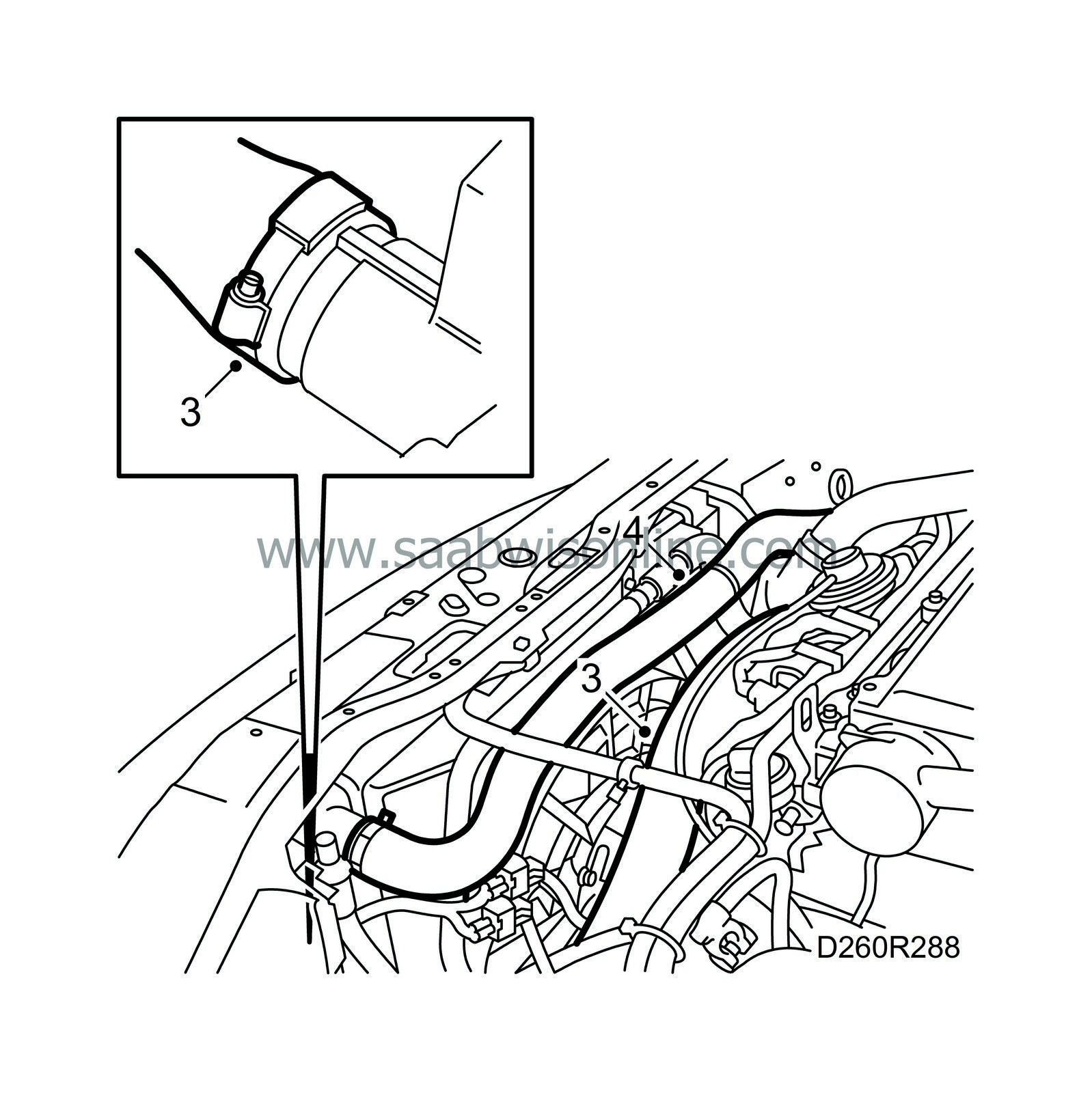
|
|
| 4. |
Fit the upper coolant hose.
|
|
| 5. |
Raise the car, secure the coolant hose to the fan cowling with a cable tie and fit the bottom cover.

|
|
| 6. |
Lower the car. Fill with coolant.
|
|
| 7. |
Bleed the system as follows:
|
|||||||
| 8. |
Connect exhaust hoses to both engine exhaust system and auxiliary heater exhaust system and start the engine.
Start the parking heater with the diagnostic tool (Body, SID, Activate, Heater). The parking heater stops when the engine temperature has reached 80 degrees C or on exiting the parking heater menu. Check that there is a continuous flow of coolant in the hose from the thermostat housing to the expansion tank. Rev up the engine briefly to ensure circulation of the liquid. Run the engine until the thermostat has opened. |
|
| 9. |
Make sure there are no leaks.
|
|
| 10. |
Fit the upper engine cover.
|
|

